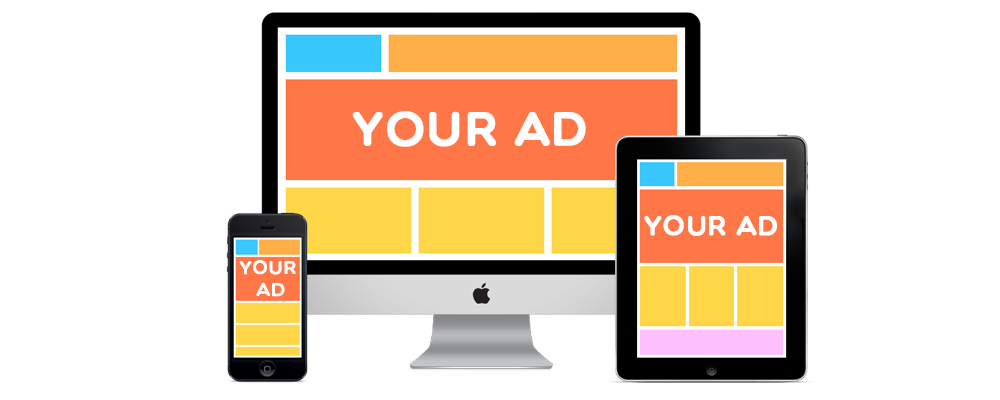Online advertising is growing faster than expected, driving global advertising investment up 4.7 percent this year. That predicts the global media agency in their published on Monday Advertising Expenditure Forecasts, thus correcting the forecast of 4.0 percent from the previous report in December.
For 2020 and 2021 Zenith forecasts a growth of 4.6 percent, which is above the previous forecasts of 4.2 percent and 4.1 percent.
“Online advertising will exceed $ 250 billion for the first time this year,” said Jonathan Barnard, Zenith’s Head of Forecasting and Director of Global Intelligence. “The speed of growth is surprising. The reason is, and digital challenges are driving established brands to improve their performance. “
Estimates have also been adjusted retroactively, meaning an online growth of 16 percent in 2018 instead of 12 percent. This increased the online advertising revenue estimate in 2018 from $ 231 billion to $ 246 billion.
This can also be expected for the next few years, a rapid growth: by 2021, an average of 10 percent growth per year. Thus, online digital advertising will reach $ 329 billion by 2021, or 49 percent of all online advertising spend.
This growth is driven by online video and social media, which are projected to grow 19 percent and 14 percent annually by 2021, while SEA and Classifieds grow at a slower rate of 7 percent a year.
The US leads to global growth. The US is by far the largest contributor to online advertising growth between 2018 and 2021, expanding the market by $ 32 billion. In second place is China with 16 billion US dollars, India follows with 5 billion US dollar.
Small online advertising companies targetted very targeted; Digital Challenger brands are aimed at high frequency to a broader target group
A large part of the online advertising growth – and thus of the entire advertising market – currently comes from small businesses such as local shops, restaurants and hobby shops.
Platforms like Google and Facebook have opened the online advertising market to many of these small businesses for the first time, offering simple self-service tools for creating advertising and managing campaigns.
Localization of the target group address, which is needed to reach a limited potential customer base is thereby possible. Advertising for small businesses thus increases from an extremely low base to a share of the online advertising market that better reflects their true contribution to the economy:
In most countries, small businesses contribute half or more of GDP and an even larger share of employment. These companies do not use mass media to gain wide publicity. Their customer base is often so limited that it would not make sense.
Digital challenger brands use the complete technology arsenal to change the established market to change the whole category. They also use venture capital to fund their digitally targeted campaigns – new money for the advertising market.
To grow, these companies must first and foremost win new customers. Achieving this online requires a completely different awareness strategy than traditional media.
The social video combines great reach, accurate targeting and impressive creativity, but attention spans are known to be low, as the average scrolling through a newsfeed often takes only a few seconds. Brands need to focus attention and use personalization to make online advertising more relevant through repeated short-term appearances.

Digital challenger brands also in offline media.
Digital challenger brands not only rely on digital advertising but also establish themselves as leading advertisers in offline media, especially on television and out-of-home.
The spending of these digital brands helps shore up global TV investment, which is reasonably stable despite the decline in traditional television consumption in key markets such as the US and China.
By 2021, television advertising will grow by 0.7 percent annually. This is all about traditional online advertising on linear television; TV-like services offered over the Internet are included in Internet Ad spending.
Out-of-home advertising is the fastest-growing “traditional” medium – where Zenith expects growth of $ 4.4 billion between 2018 and 2021 (compared to $ 3.7 billion in TV growth).
Out-of-home continues to benefit from the proliferation of digital screens, but also from the introduction of programmatic shopping, which enables more efficient and effective data-driven transactions.
Print advertising continues to decline. We forecast that magazine ads will contract $ 5.0 billion between 2018 and 2021. The volume of newspaper ads will fall by $ 6.3 billion.
An end to this descent is not in sight. Between 2013 and 2018, the print share of online advertising dropped from 24 percent to 13 percent, and we expect that share to decline to 9 percent by 2021.
Again, the advertising is only included in printed publications – any advertising on the websites of publishers or other online brand appearances is included in the volume of Internet Ad spending.
The trend is similar in Switzerland as well: TV advertising is still stable, out-of-home and online advertising is rising, and the print share is declining, despite the trend towards a decreasing daily viewing time.
Unlike the online advertising market, Swiss print media still has a very significant market position (30 percent in 2018), but a downward trend is visible in Germany as well.



